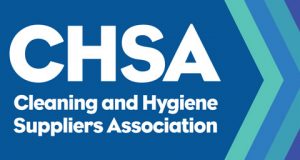 Many of us will have witnessed the familiar scene – whether it’s at a bar, theatre or restaurant – a long queue of ladies waiting to use the washroom, while the gents’ toilets flows congestion-free. A recent report published by the Royal Society for Public Health has called for the fair provision of public toilets for women, specifying two female toilets needed for every male one.
Many of us will have witnessed the familiar scene – whether it’s at a bar, theatre or restaurant – a long queue of ladies waiting to use the washroom, while the gents’ toilets flows congestion-free. A recent report published by the Royal Society for Public Health has called for the fair provision of public toilets for women, specifying two female toilets needed for every male one.
While investing in more female public washrooms is half the battle for facilities and councils, it’s also important that these spaces have the appropriate provisions in place, so they are as hygienic, germ-free and accessible as possible for visitors.
Addressing personal hygiene
With many of the most harmful bacteria we might potentially encounter originating in the washroom, personal hygiene is one of the most important elements facilities managers (FMs) need to consider. It may sound simple, but equipping washrooms with enough sinks, soap dispensers and hand drying equipment is vital in minimising the spread of bacteria and illnesses – especially when you consider that many viruses and bacteria are transmissible by touch. Installing no-touch automatic dispensers will help to reduce the spread of germs by limiting the number of touch points. Adding hand sanitiser can also provide a ‘belt and braces’ approach after handwashing and drying, as it can form a long-lasting barrier against microbes for several hours after use.
Catering for all needs
When considering the implementation of more female washrooms, ensuring the appropriate feminine hygiene products and waste disposal facilities are in place is of upmost importance. Organisations need to start to consider providing feminine hygiene products in the same way they do toilet paper, soap and other bathroom necessities. Providing sanitary products in a basket within the main toilet space is one option, but for a more dignified and discreet experience, why not consider installing a small dispenser within the toilet cubicle? Initial Washroom Hygiene has developed a unique, compact unit, designed specifically to hold and dispense sanitary items. Typically located alongside the toilet roll holder, female washroom users who may have been caught unaware are provided with easy, discreet and free access to sanitary products, at the time they need them most.
Sanitary items are one of the main culprits of toilet blockages. Despite popular belief, tampons are not easily biodegradable, so it’s important to provide a female hygiene unit within the cubicle. Otherwise, washroom users may feel they have no choice but to flush sanitary products down the toilet, or may even be compelled to take their waste away with them.
Creating a hygienic environment
In tandem with ensuring more public washrooms are available for female users, and that they include the right-hand washing and sanitary equipment, it’s important to make sure that these spaces remain as clean as possible, to further reduce the spread of any germs. A clearly documented cleaning schedule will help facilities managers monitor how often the washrooms have been checked and cleaned, while making this publicly visible will help reduce any concerns from washroom users. You may also want to consider drafting in the help of a specialist cleaning service to carry out a deep clean of your washroom a few times a year, when any blockages in your washroom pipes or urinal traps can be removed.

Image © Renee Verberne
The smell of success
When it comes to public bathrooms scenting can often be overlooked. Yet if your washroom harbours unpleasant smells, it is often the most obvious and off-putting quality, which may prevent visitors from returning to your premises. In an Initial Washroom Hygiene study examining the state of air care in public and office washrooms, we found that 73% of those surveyed said an unpleasant smell in the washroom would negatively affect their perception of a venue. FMs can take action by using scenting products, which help control and minimise the smells that come from malodour-producing bacteria. Installing air fresheners that automatically dispense fragrance will help neutralise any bad smells as well as creating a pleasant-smelling environment. Air purifiers can also be installed to help eradicate any airborne bacteria and viruses. These extra touches enable people to feel more comfortable and demonstrates care and concern towards them and their washroom experience, so it’s well worth considering.
Conclusion
After queuing for a long time, it can be doubly frustrating to then find toilets are either ill equipped or in too poor a state to be used. Keeping washrooms clean, well-stocked and ready for the needs of all users is an essential consideration, especially considering that it has been found two in five people require more frequent trips to the lavatories for medical reasons.
By Jamie Woodhall, UK Technical & Innovation Manager, Initial Washroom Hygiene





